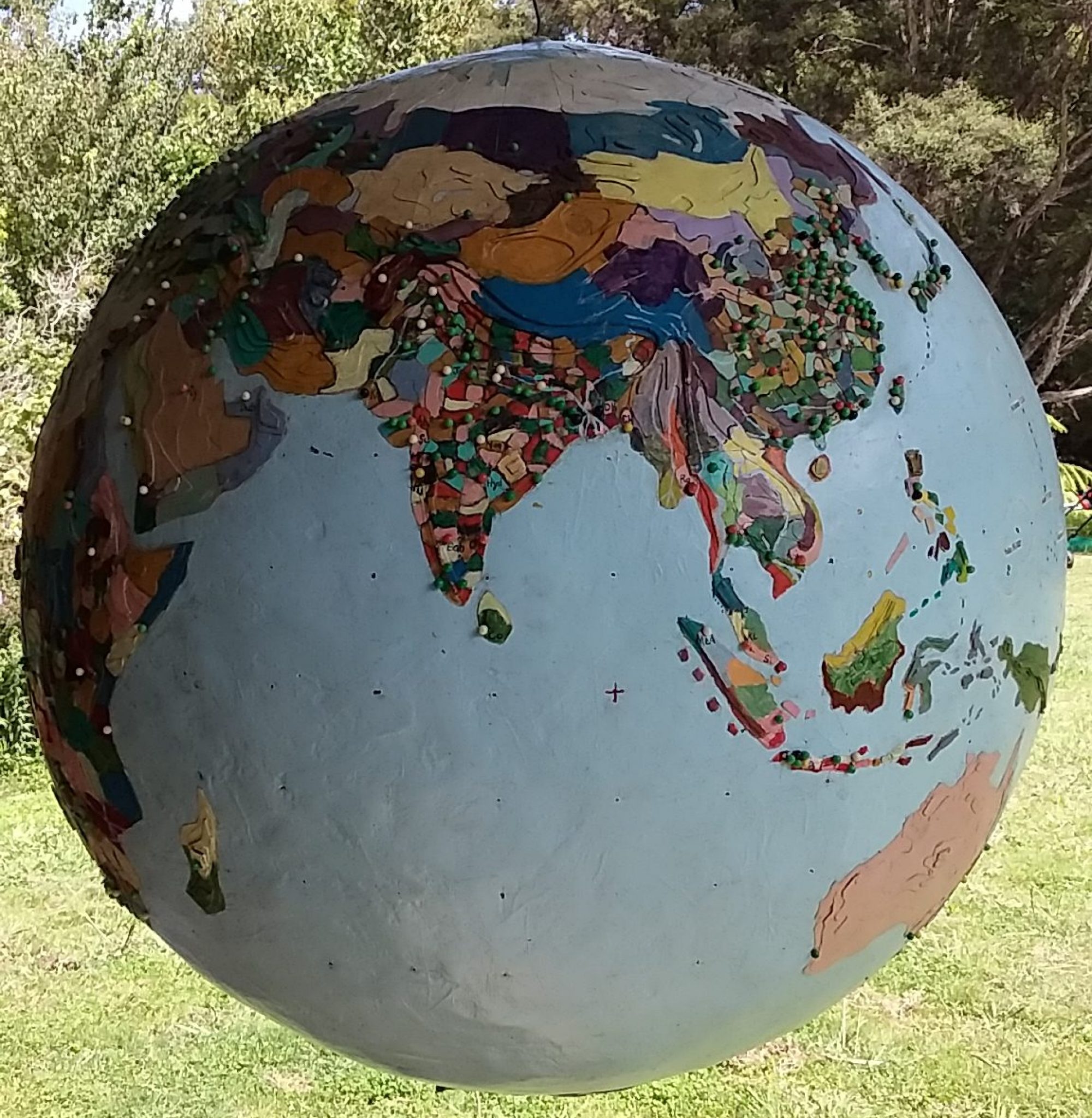The Millisphere of LA
By my definition a millisphere is a “sphere of interest” of one thousandth of the total world population; a region of roughly 7 million, but anywhere between 3.5 and 14 million, people. I use it as a “lens,” a human geography model, through which to attempt to make sense of the world.
In a previous column I had sketched out the millisphere of Te Moananui, covering all the islands of the Pacific. In that column I incorrectly stated that Los Angeles was now the world’s largest Polynesian city, fact checking revealed that Auckland still holds that record.
Los Angeles is one of about 40 millispheres fronting onto Te Moananui, 20 to the East and 20 to the West.
Los Angeles County (population around 10 million) has the second largest urban population (after New York) in the USA and owed its initial 20th century growth spurt to the extraction of oil in California; but it was the Second World War that made it what it is today.
During the Second World War, Los Angeles was home to six of the USA’s major aircraft manufacturers. “We won because we smothered the enemy in an avalanche of production, the like of which he had never seen or dreamed possible,” commented one general after the war.
That Los Angeles has an African American population has its foundation with the 300,000 black workers brought from the American South to work the LA munitions factories during the Second World War.
Both Lockheed and Martin, later to merge and form Lockheed Martin, the world largest arms manufacturer, were started in LA. The worlds second largest firm, Northrop Grumman, is based in LA.
Excluding China, the world’s arms producers’ total sales in 2013 were somewhere between $US four and seven billion, with six American companies in the top ten.
Lockheed Martin, a sponsor of the “NZ Defence Industry Assn Conference,” in Auckland last week, employs 125,000 (security cleared) workers worldwide and in New Zealand Lockheed Martin have 200 staff embedded in NZ military bases, undertaking prosaic work such as the $446 million upgrade on Te Mana and Te Kaha frigates, and weapon and instrument repair; as well as wiring us into the “five eyes” cyber-surveillance infrastructure run out of Pearl Harbour.
“With today’s attacks, you are clueless about who did it or when they will strike again. It is not cyber-war but cyber-terrorism,” said Eugene Kaspersky, an American Internet security firm CEO describing this new form of warfare. The United States has been both a victim and an agent of cyber-attacks.
Arms manufacture has been described as state sponsored research and development and a Keynesian stimulus to the wider economy, this is certainly true of the USA, it’s what built Los Angeles.
Arms manufacture is big business and they amass export earnings for their host state by selling their wares to the developing world.
One theory on the development of the Chinese economy, links its rise to the Vietnam War in the ‘70s. The shipping container was in its infancy until the US Defence Department gave it the 8ftx8ftx10ft ISO standard for a trial run from Los Angeles to Saigon to supply the American forces in Vietnam.
Within a decade the standardised shipping container had gone global, in turn distributing Chinese manufactured goods to a now global market.
In 2015 Long Beach and Los Angeles were America’s largest container ports, but globally they were only 16th and 18th; most of the rest being in Asia, with Shanghai as number one.
The idea of warfare driving cultural development is not new. That the Scientific Revolution happened Europe in the seventeenth century and not somewhere else was, some have suggested, because of Europe’s peculiar geography of competing waring states.
Violent deaths in European wars peaked in the 20th century with death rates of between 10 and 20 million per year during the Second World War, which was then followed by a long period of peace (in terms of the numbers of deaths).
These days globalisation has produced so many shared interests in trade and finance that states prefer to go to arbitration than to war. There are now remarkably few wars between states. Conflicts are now civil wars and these conflicts within states kill fewer people than war between states.
In 2011 the world’s three deadliest conflicts were in Iraq, Afghanistan and Sudan but deaths in those conflicts were far fewer than the murders carried out in Mexico’s drug wars with America being the main buyer of the drugs and the seller of the arms. The street gangs of LA are a legend in that ‘plaza’.
The arms industry continues to move with the times; now there is growth to be had as the state polices its own citizens in an increasingly, militarised, American way.
Just as we got used to helicopters and black-clad, para-military NZ police with all the latest equipment swooping on the Kim Dotcom mansion in Auckland (on behalf of the Hollywood) they were doing the same (minus the helicopters) to our local criminal family in Abbot Street in Gonville.
’High intensity policing’ and ‘low intensity warfare’ is threatening to merge, at least in LA. The US Army Medical Corps has its training hospital in South LA because of the nationally high numbers of gun shot wounds presenting there.
All the while Hollywood, once again based in LA, presents a constant stream of propaganda, a summary of which is: a gun solves all problems.
What America now needs to consider in its “War on Terror”. How could you wage war on an abstract noun and how could you ever declare victory?
